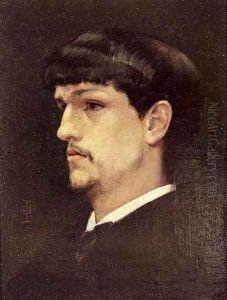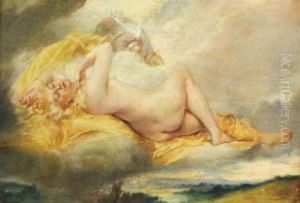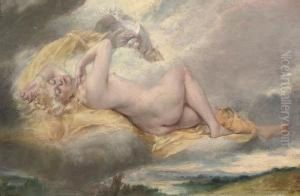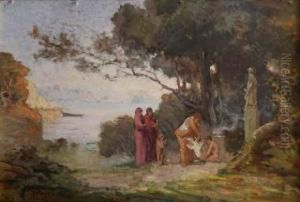Henri Ludovic Marius Pinta Paintings
Henri Ludovic Marius Pinta was a French painter and decorator, known for his contributions to various important public buildings and churches in France during the late 19th and early 20th centuries. Born on April 13, 1856, in Paris, Pinta was part of a generation of artists who were active during a period of artistic transition that saw the rise of new art movements such as Impressionism and Art Nouveau.
Pinta's early education and training in the arts is not well documented, but it is known that he was a student of the École des Beaux-Arts in Paris, where many French artists received their formal training. He honed his skills under the tutelage of established painters and decorators of the time, such as Pierre-Victor Galland, who was known for his decorative work in the Paris Opera House and the Hôtel de Ville.
Throughout his career, Pinta was involved in numerous significant projects. He gained recognition for his decoration of public buildings, including the Sorbonne and the Hôtel de Ville in Paris, as well as his work in various French churches. His style was characterized by a blend of academic painting traditions and the incorporation of Art Nouveau elements, which was popular at the turn of the century. Pinta often collaborated with architects, contributing his artistic expertise to the overall aesthetic and thematic vision of the interior spaces.
Pinta's work extended beyond painting and decorating; he was also an accomplished illustrator and participated in the design of French banknotes during his career. Despite the prominence of his work in the public sphere, Pinta did not become as well-known as some of his contemporaries, and his personal life remains relatively obscure in historical records.
Henri Ludovic Marius Pinta passed away on May 6, 1944, in Paris, leaving behind a legacy of artistic contributions to some of France's most revered buildings. Although he may not be a household name, his work remains an integral part of France's rich artistic heritage, reflecting the skills and creativity of artists during a pivotal time in the country's cultural development.



